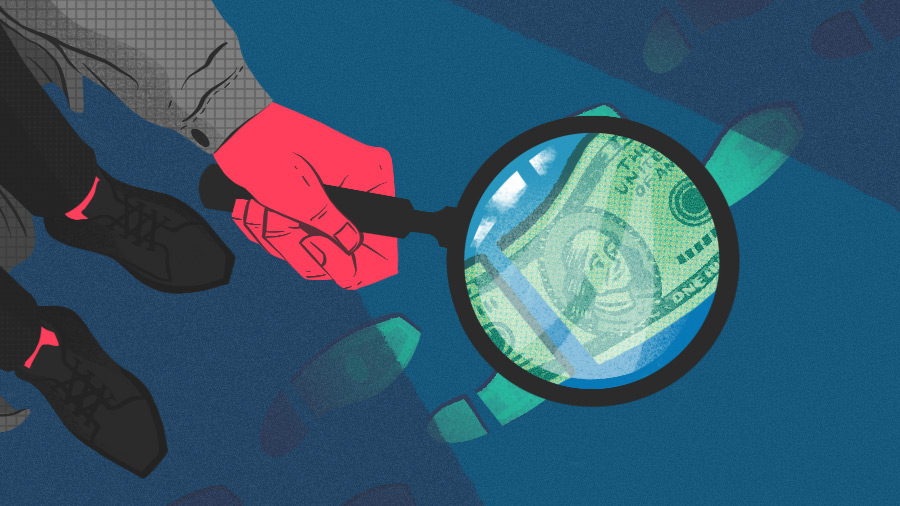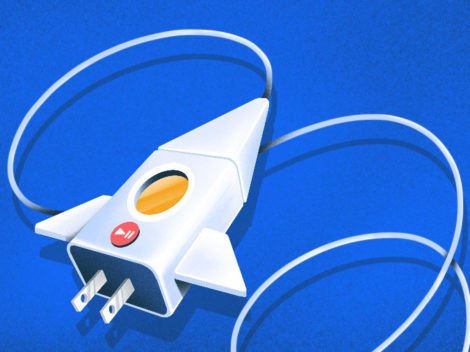We have formulas galore for valuing fast-growing, money-losing companies in hot sectors. But at the end of the day, there’s one metric that matters: How much are investors willing to pay?
Subscribe to the Crunchbase Daily
When it comes to companies taking the SPAC route to public markets, it seems investors are willing to pay much less than a few weeks or months ago. Shares of many venture-backed companies that carried out the most highly valued mergers with blank-check acquirers are trading for a fraction of their former highs.
It’s a trend that crosses sectors. Opendoor, the online platform for home buyers and sellers, has shed roughly half its value after shares peaked in February. Shares of QuantumScape, the developer of batteries for electric vehicles, have shed nearly three-fourths their value since their December peak. And Clover Health, a provider of health plans for seniors, has dropped about 80 percent since completing its SPAC merger in January.
We look at aftermarket performance for a cross-section of venture-backed companies that took the SPAC route to market in the chart below:

It’s not necessarily an alarming development for the SPAC world to see stocks far off their peaks. While no stakeholder likes to see shares fall, it’s pertinent to note that by many other comparables valuations are still pretty high for the above-listed companies.
For instance, most of them still have market capitalizations that are higher than valuations they set before going public.
In the case of Opendoor, Social Capital Hedosophia II, a blank-check acquirer tied to billionaire Chamath Palihapitiya, inked its initial merger deal at an equity value of around $6.2 billion. It’s current market cap is around $11 billion.
The merger deal for health and wellness platform Hims & Hers set a $1.6 billion valuation for the company, alongside a $280 million cash investment, also below current levels. Ditto for Lidar startup Luminar, which was valued at $3.4 billion in its initial SPAC tie-up. (Keep in mind these are general rather than exact comparisons as market cap isn’t a precise proxy for metrics like enterprise or equity value used in merger agreements.)
Shorts are circling
While there’s no single cause for the SPAC class to be off its heights, a few factors stand out.
One is the emergence of short sellers spotting potentially easy prey. Shares of QuantumScape, for instance, took a tumble following a scathing report on the company from short-seller Scorpion Capital. Others, such as Virgin Galactic, have a comparatively high percentage of shares held by shorts.
Another factor is simple supply and demand. Now that a lot of SPACs have completed mergers with companies in hot spaces such as electric vehicles, 3D printing and autonomous driving, investors have more growth companies to choose from and needn’t bid up a single one.
There are plenty more on tap should this cycle continue. In the first quarter of 2021 alone, a jaw-dropping 296 SPACs went public on U.S. exchanges, per Renaissance Capital, raising more proceeds than all of 2020.
Fewer new SPACs, but still plenty of deals
For now, it looks like the pace of brand-new blank-check acquirers hitting the market is slowing down. After a record of 109 new SPAC deals in March alone, issuance has now come to almost a standstill with just 10 SPACs in April, CNBC reports.
That said, blank-check acquirers that already went public are still busily announcing new and ever-larger merger targets. Earlier this month, Southeast Asian ride-hailing giant Grab announced plans for a record-setting SPAC merger with Altimeter Growth Corp. in a deal that values the company at $39.6 billion.
And so the SPAC saga continues …
Illustration: Dom Guzman

Stay up to date with recent funding rounds, acquisitions, and more with the Crunchbase Daily.





![Illustration of stopwatch - AI [Dom Guzman]](https://news.crunchbase.com/wp-content/uploads/Halftime-AI-1-300x168.jpg)



67.1K Followers